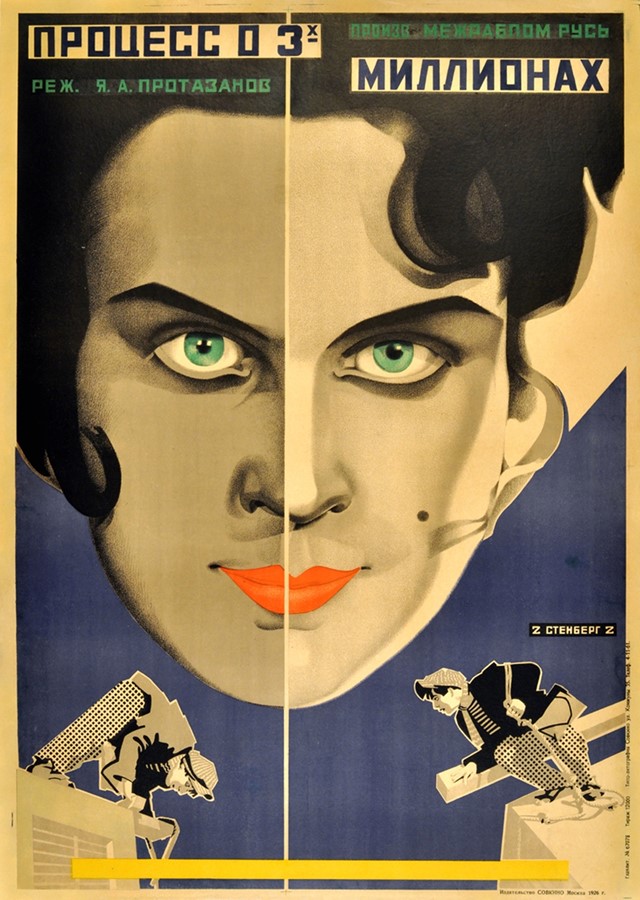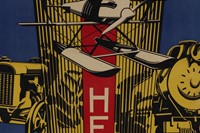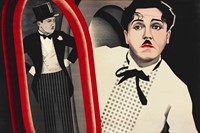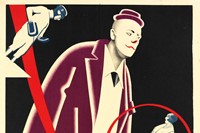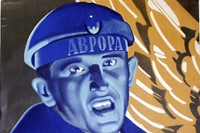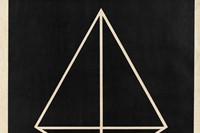AnOther explores vibrant poster art from the world of Soviet silent film
Imagine a romcom about an obsessed chess fan and his long-suffering wife, driven to attempted suicide as the International Chess Tournament looms large in her psyche. Add the repeated discovery of kittens in the most peculiar of places (including the inside pockets of overcoats) and you get the gist of Chess Fever. This film begs the question no one saw coming: who knew state-run Soviet silent films of the 1920s were so much fun?
Currently showing at GRAD, the non-profit Russian art gallery in London’s Fitzrovia, Kino/Film: Soviet Posters of the Silent Screen is an exhibition showing both silent films of the era and featuring rare examples of the radical poster art of the time, including works by Georgii and Vladimir Stenberg, Nikolai Prusakov and Mikhail Dlugach. Many of which are being shown for the first time in the UK.
"There may have been far fewer cars in the USSR in post-revolutionary 1922 then there had been in 1912, but the popularity of films catapulted the number of cinemas from 2,700 to 7,500 between 1923 and 1926"
Created by those directly involved in, or inspired by the main avant-garde art movements of the time, including Malevich’s Suprematism and photomontages made famous by of El Lissitzky, the colour-blocking apparent on many of the posters echoes Russian artist Aleksander Rodchenkno's view that all painting is a combination of three colours: red, blue and yellow.
However this use of bold colour blocks was as much a technological necessity as it was an ideological one, since modern offset printing techniques came much later to the USSR than they did to the West. Photographic images were instead projected on the wall and copied by hand, creating seemingly three-dimensional effects “through skillful use of textures alternating with flat colour fields”, explains the shows co-curator Lutz Becker.
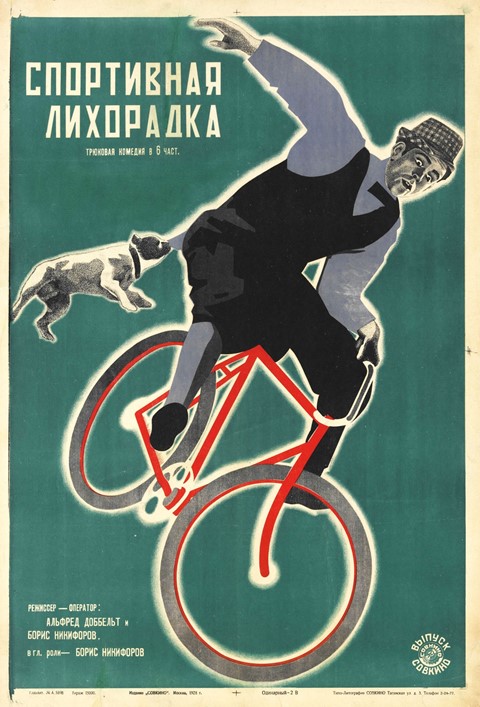
Projected on the walls between the posters are excerpts from seven Soviet silent films, which were often used as tools of propaganda directed at the millions of illiterate Soviet citizens. For example the film Turksib depicts the building of the Turkistan/Siberian railway, a prominent part of Stalin’s first five-year plan and a demonstration of the industrial muscle of the USSR. While the unexpectedly charming The Three Million Case, along with the aforementioned comedic gem, Chess Fever, reveal the huge influence of American comedies.
There may have been far fewer cars in the USSR in post-revolutionary 1922 then there had been in 1912, but the popularity of films catapulted the number of cinemas from 2,700 to 7,500 between 1923 and 1926. This exhibition captures the significance of this popularity, as well as the artistic, social and economic realities of Soviet life.
KINO/FILM: SOVIET POSTERS OF THE SILENT SCREEN runs from until March 29 2014
